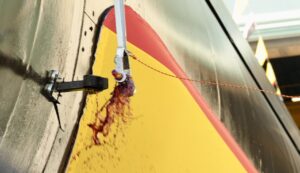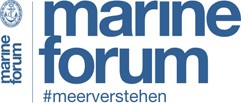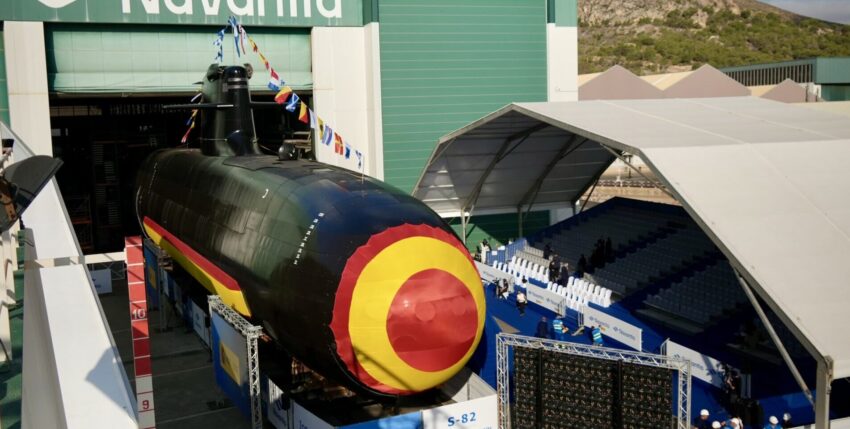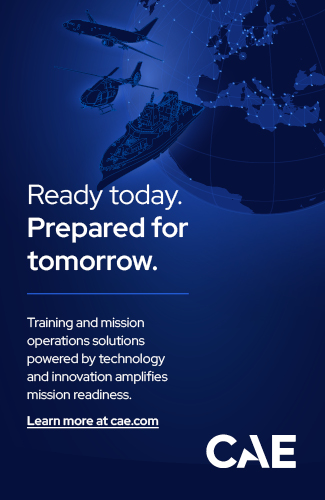On 3 October 2025 in Cartagena, the S-82 "Narciso Monturiol" solemnly christened. The second boat of the S-80-Plus class marks a turning point for Spain, and not just in terms of technology, after decades of dependence on French licences.
Construction and drive
The 81 metre long boats displace around 3,000 tonnes when submerged. They have a pressure hull made of high-strength steel (80 HLES). The design follows a single-hull concept with a hydrodynamically optimised spindle shape. The main propulsion system consists of a diesel-electric system with 120-cell battery banks, supplemented by a modern AIP (Air Independent Propulsion) system based on bioethanol.
This so-called BEST-AIP (Bio-Ethanol Stealth Technology) utilises a reforming process: high-purity hydrogen is produced from bioethanol, which reacts with liquid oxygen in fuel cells. This produces electrical energy for the drive motor almost silently. The system will be installed as standard from the third boat (S-83), with the first two units being retrofitted at a later date. During operation, submerged operations of up to three weeks should be possible without snorkelling.
Sensors and combat system
The S-80 class utilises SUBICS (Submarine Integrated Combat System), an open combat and command and control system from Navantia/Lockheed Martin based on adapted Virginia/Seawolf technology.
SUBICS brings together all sensors and weapon systems in a standardised data fusion chain: The acoustic chain (a cylindrical bow sonar, flank arrays, passive towed sonar, mine avoidance sonar), the electromagnetic spectrum with the ESM suite PEGASO from Indra and the radar Aries-S (also Indra), the optronics via a non-penetrating mast (daylight/residual light/thermal image). The situation picture is supplemented by a classic periscope. The weapon deployment system is designed for NATO data links (Link-11/16/22) and supports the use of heavy torpedoes (DM2A4) and a sea-target missile. The integration of land-based cruise missiles is planned for the future.
A note on this: The original designs for the S-80 envisaged an intervention capability using the UGM-84 Sub-Harpoon; Boeing received an order for integration in 2021. Current plans favour alternatives (including NSM from Kongsberg or tests for the JSM), so that the final weapon configuration has not yet been finalised.

Stealth and protection
Particular attention is paid to acoustic cloaking. While AIP operation, which significantly reduces the number of snorkelling phases, already contributes to signature reduction, the S-80 class also has sound-absorbing outer cladding (use of anechoic tiles), structure-borne noise damping, low-noise propulsion units and a system for permanent self-noise monitoring in addition to the vibration-insulated propulsion train. The quieting measures thus correspond to the state of the art in modern submarine technology. For self-protection, the boat has a torpedo defence system with decoy launchers.
Delays and industrial significance
The programme began in 2004, but the S-81 "Isaac Peral" could not be put into service until the end of 2023 - almost 20 years later. The reason for this was a serious weight problem: the boat was mathematically not buoyant. With the help of General Dynamics Electric Boat (USA), the hull was extended by seven metres to ensure buoyancy and stability.
The programme is highly significant in terms of industrial policy: over 6,000 jobs are directly and indirectly linked to the series, and more than 100 suppliers are involved.
With the S-80 class, Navantia joins the small circle of European developers and manufacturers of conventional submarines - alongside TKMS (Germany) and Naval Group (France), Saab Kockums (Sweden) is also involved. Fincantieri is also building on the German-Italian line with U212 NFS in national production; the UK (BAE Systems) is focussing on nuclear-powered boats.
Security policy context
Due to construction delays, the Armada had to keep its outdated Agosta boats in service well beyond their technical service life. With the S-80 class, it now has platforms that open up new opportunities for action in covert operations, maritime reconnaissance and NATO missions in the Mediterranean and Atlantic.
At the naming ceremony, Admiral Piñeiro emphasised that the submarine was "the ultimate deterrent: inconspicuous and deadly". This statement emphasises the claim to use the submarine weapon as a strategic tool for naval supremacy. From a sober point of view, the S-80 ranks in the upper segment of conventional AIP submarines - comparable to the German Type 212CD or the South Korean KSS-III.
International reactions
- France (Mer et Marine) referred to the massive delays and recalled the earlier co-operation on the Scorpène. Respect for the technical performance is mixed with concern about new competition in the export business.
- Great Britain emphasised Babcock's involvement and stressed the added value for NATO: "Conventional AIP boats cover mission profiles that nuclear units cannot perform efficiently.
- Russia commented soberly: it points to the long development time and US assistance, but recognises that the boats with AIP and modern sensor technology are "among the best non-nuclear submarines in the world". Geopolitically, the Spanish development is seen as a reinforcement in the regional NATO context, not as a global shift.
Conclusion
With the "Narciso Monturiol" Spain gains a modern means of naval warfare and at the same time secures independent industrial expertise. In technical terms, the S-80 class catches up with the established AIP designs. Politically, it emphasises Spain's claim to be not only a user but also a developer of maritime high technology.
hum










